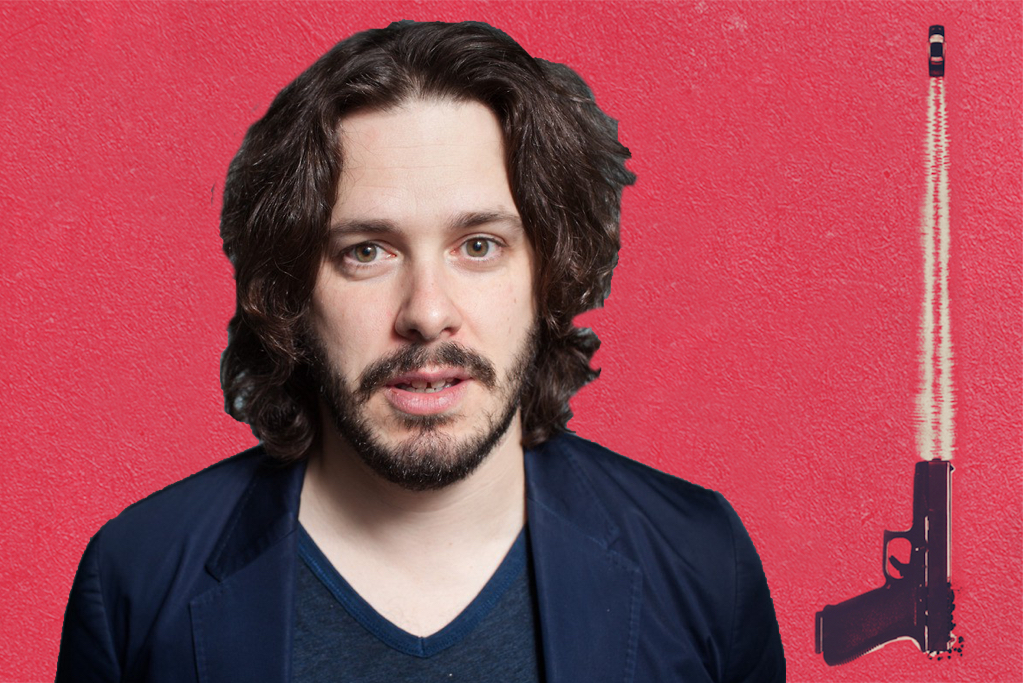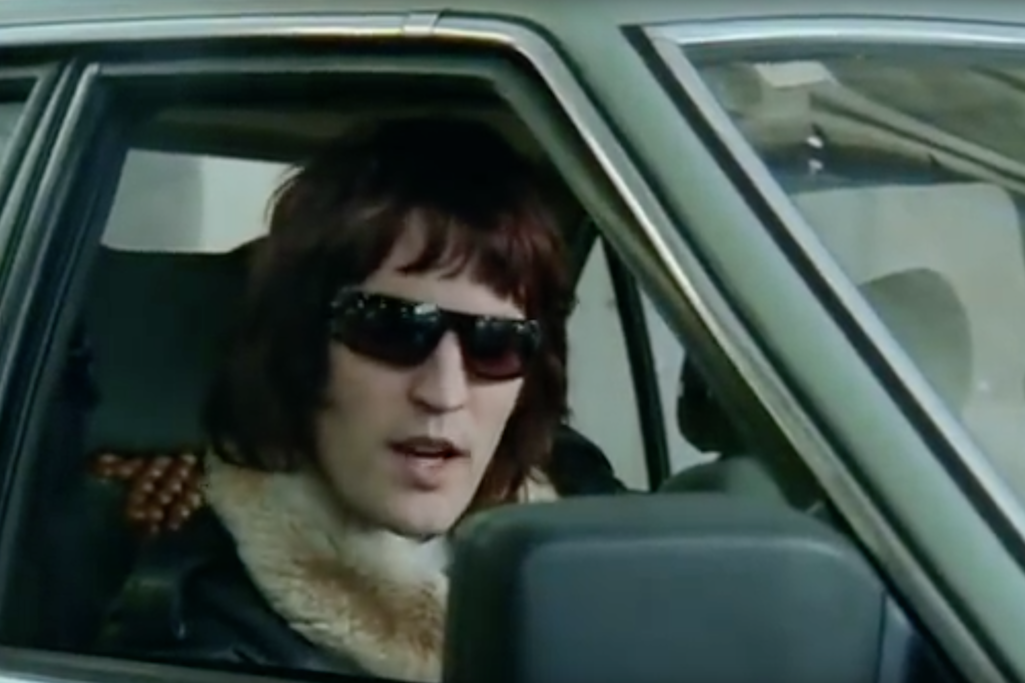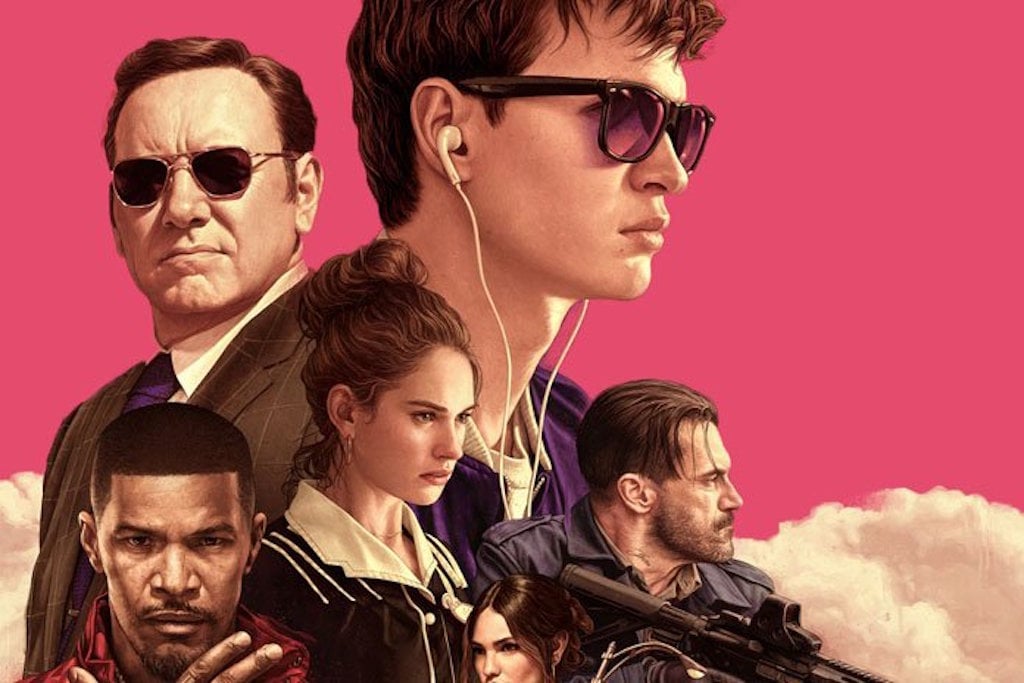Inside The Music And Pop Culture Of ‘Baby Driver’ With Edgar Wright
He's very glad you laughed at the Pixar joke.

If it feels like you’ve seen Edgar Wright everywhere you look this month, that’s by design. The director of Baby Driver (and its stars) have been promoting the film almost non-stop since its world premiere at SXSW in March. The first screening went so well the film’s release date was brought forward by over a month.
While this means the promo schedule has been compressed into a more intense block of time (and Wright has just come off the plane from Auckland with the inevitable air-travel cold) he’s the last person you’ll find complaining.
Baby Driver — which, if you’ve somehow missed the promo onslaught, is “a car-chase movie driven by music”, per Wright’s elevator pitch — went from an admittedly star-studded, slightly oddball action caper slated for an underwhelming late-summer slot to being the number two movie at the US box office on July 4th weekend.
“Which,” Wright acknowledges, “is crazy”.
Baby Driver, in fact, was the only non-franchise film in the US box office top five last weekend. Along with Jordan Peele’s instant classic Get Out and the underdog success of indie comedy The Big Sick, Wright’s first solo original feature (i.e. not adapted from a comic or co-written with Simon Pegg) is enjoying the specific brand of praise directed at hit movies that aren’t a sequel, an instalment, or a reboot.
“You know what’s funny?” Wright says, at the mention of this very 2017 subgenre of critical acclaim. “Myself and Jordan Peele, and [The Big Sick writers] Kumail Nanjiani and Emily Gordon all live very close to each other in Los Angeles. We all regularly go and get brunch. Our three films are three of the original five film hits this year; maybe we live in the original film district.
“Maybe it’s the brunch place we go to. Shout out to Little Dom’s. Shout out to Messhall Los Feliz.”
An Extremely 2017 Musical
It certainly seems Wright’s gone full Hollywood. Not personality-wise — the soft British accent is still intact — but after three extremely British films, one very Canadian, and half of a Marvel movie, he’s turned his idiosyncratic style to one of the most iconic American genres.
While some of the kinetic visual style he’s honed over the past two decades is a little toned down, the impeccably precise edits, sound design that tells a story on its own, and an emphasis on practical effects (from stunt driving to the odd bit of splatter) make for a genuinely exhilarating chase movie.
Then add an extra layer on top: the soundtrack creates a pulse for each scene, gunshots cracking to the beats of The Champs’ ‘Tequila’ or The Damned’s ‘Neat Neat Neat’, car boots slamming and wipers sweeping in time with Blur’s ‘Intermission’. It’s what Wright calls “a diegetic musical”, with most of the tracks provided by the young protagonist’s collection of iPods (gathered from stolen cars over his career), white buds always in his ears to drown out the whine of tinnitus that steals his concentration otherwise.
Tracks also drift in through shopping mall speakers, car radios, cafe stereos — there’s only one (arguably) non-diegetic song in the entire movie.
Wright used the idea of a getaway driver timing his jobs to the perfect song in a video clip he directed over a decade ago — though Noel Fielding’s driver flipped through a fat CD wallet rather than thumbing a click wheel. And he had the original concept in mind ten years before that, imagining a car chase set to the Jon Spencer Blues Explosion’s ‘Bellbottoms’.
Now was the right time not only in terms of the music tech at the film’s centre, but also where he was at in his career.
“I couldn’t have made the movie 10 years ago, let alone 20 years ago,” he says. “I don’t think I would have had the confidence to really write what I wrote and think I [could] pull it off.”
As the Mint Royale clip shows, the iPod isn’t crucial to the story exactly — though anyone who spent their adolescence cursing a skipping Discman would have to admit that Baby might struggle to keep his soundtrack going during the film’s on-foot sequence if the movie had been set in 1999.
But, Wright points out, the film he reckons is the first ‘diegetic musical’ — George Lucas’ American Graffiti, which was made in 1973 and set in 1962 — managed to create its iconic soundtrack from sources occurring organically in each scene, like jukeboxes and car radios.
“Think about during your day, how much music you actually listen to A, by choice, and B, by accident,” Wright says. “Just when you’re like, going into a Starbucks. Or like you’re at work. Or, you’re in an elevator. Think about how much music you actually consume not by choice.”
His point is, that while the conceit could have been possible before now, the subtext that Baby gets to exert a measure of control over his life because he can play the perfect song for any situation is unique to a film set in 2017 (or thereabouts).
“I think the iPod presented a new thing that people still do now. People can essentially soundtrack their own life 24/7. I think people do that in macro, and I think this movie is taking it a little bit to the extreme.”
Easter Eggs and Running Gags
The films that got Wright to where he is are visually meticulous, enormously genre-savvy, and stacked with very good jokes. They’re also notorious for their re-watch value. This is not just because they’re just as fun when you already know what’s coming, but also because they’re honeycombed with so many hints, foreshadowing, and callbacks you can’t absorb them all in one go.
From the obvious (like the numbers referencing the sequence of Evil Exes in Scott Pilgrim Vs The World) to the near-subliminal (Hot Fuzz’ church fete rifle range being echoed in a brief sequence in the final confrontation) and even the intertextual (as with the multiple running gags across the Three Flavours Cornetto/Blood & Ice-Cream Trilogy).
If anything, fans have learned to watch almost a little too closely, and Wright’s well aware that his reputation precedes him at this point.
“I love doing that in movies, but I never want people to feel like they’re missing out,” he says. “So, sometimes people will say about the previous movies, like ‘Oh, Edgar Wright movies are better on a second watch cause you can pick up all the detail.’
“That’s great, and I really like that, but it’s also like, at some point you want to have a film that’s entirely, it has to be entertaining in its own right, first time round. I think Baby Driver is probably the one that there’s less you need to know going in.”
“What’s great about the Pixar joke is the set-up is like an hour and 15 minutes before the punchline.”
Possibly the best example of this balance is a brief channel-surfing sequence early on that takes a slightly different tack to the one in Shaun Of The Dead. On the one hand, eagle-eyed fans will know to watch closely; on the other, for the uninitiated, it’s simply a fun acknowledgement of shared cultural references on a wider scale — another Wright hallmark that dates back to Spaced.
And for both audiences, there’s a satisfying payoff, with a Pixar joke that got a huge laugh in both screenings I went to. Hilariously, Wright — the king of the buried in-joke — actually worried that this one broadly accessible gag wouldn’t land.
“What’s great about that is the set-up for that joke is like an hour and 15 minutes before the punchline. So when I showed that to a test screening audience, and it brought the house down, I was like, ‘ah, thank God for that’. It’s great.”
–
Baby Driver is in cinemas now.
–
Caitlin Welsh is a freelance writer who tweets from @caitlin_welsh.
–
Love film and TV? We’re holding our inaugural Video Junkee festival in July, a new annual event for lovers and creators of online video. Video Junkee is on July 28 & 29 at Carriageworks in Sydney, featuring keynotes, masterclasses, screenings, interviews and more. Tickets are on sale now.


